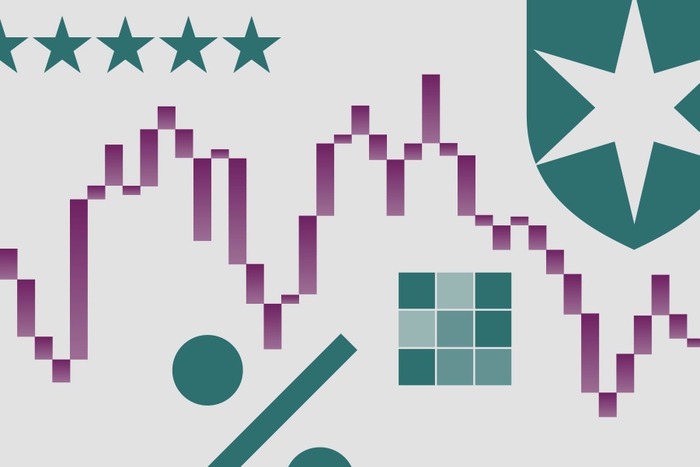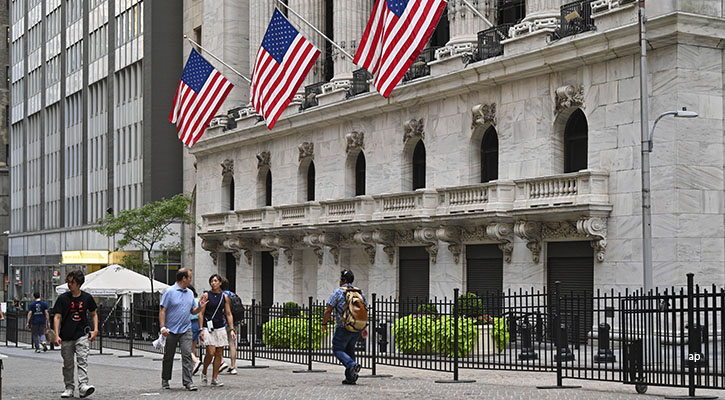Winners of the Morningstar Fund Award are recognized as funds that have added the most value within context of a relevant peer group for investors over the past year and over the longer-term.
To help our readers better observe what makes a fund a winner fund, we sent out questionnaires to the winning fund teams earlier and asked them to shed lights on their team structure, how various risks have affected their investment decisions, and the major portfolio changes over last year, etc.

Category Winner: Best Emerging Markets Bond Fund - Templeton Emerging Markets Bond A QDis EUR
Key Stats
Inception Date: 2002 Sep9
Morningstar Rating (as of 2014-02-28):



Total Net Assets (Mil, as of 2014-02-28): 6,500.00 USD
Manager: Michael Hasenstab / Laura Burakreis
Manager Start Date: 2002 Jun1 / 2010 Jan1
M: Morningstar T: Templeton Emerging Markets Bond A QDis EUR
M: Could you highlight any major changes you made to the portfolio over the course of 2013? Were there any particular holding that drove the fund’s performance for the year?
T: We think some of the dynamics that played out in 2013 are likely to continue in 2014, particularly a need to actively hedge interest-rate risk. Our unconstrained approach allowed us to be very active in positioning defensively with regard to interest rate risk last year.
A second dynamic that we saw in 2013—and expect to continue—was periods of short-term panic and contagion in emerging markets followed by longer periods of differentiation. Looking back on global fixed income markets in 2013, we often saw clusters of volatility in emerging markets dominated by a few high-profile countries. However, the variance in performance among countries was massive, and emerging markets did not follow a smooth line. For example, there were periods when markets in Hungary, South Korea and Mexico got caught up in a generalized panic, but then later rebounded. The result for the whole of 2013 was a divergence between the best-performing emerging market and the worst-performing emerging market that was quite significant. In 2013, local-currency bond markets in Hungary returned close to 13% and South Korea 2.5%, while Mexico was about flat, as represented by individual countries within the JPM EMBIG or JPM GGBI.1 In contrast, Brazil’s market had a return of about -14%, South Africa -19%, and Turkey -21%, also represented by countries within the JPM Government Bond Index-Emerging Markets.1 Global currency markets experienced a similar dynamic. We believe this type of divergence is likely to continue, given that we have reached an inflection point in monetary policy in the United States and we think interest rates will continue to move higher.
M: What is your economic outlook for 2014 specific to the markets you cover and how are you positioned to take advantage of opportunities and/or mitigate potential risks?
T: The current low levels of interest rates and the likelihood of facing a rising rate environment are central to our near-term outlook. We have positioned ourselves very defensively with respect to duration risk. We do not believe that the current low levels of interest rates represent good value, nor do we think moving further out along the yield curve appropriately compensates investors for the risk of rising rates. We expect many emerging markets to benefit from solid fundamentals, as well as from ongoing capital inflows from worldwide quantitative easing. We remain encouraged about the growth prospects and low indebtedness of many emerging markets. Asia ex-Japan looks reasonably strong to us, as do select economies in Latin America and Europe. We believe credit conditions have remained favorable in these regions given their low levels of debt and relatively stronger growth rates. Many countries in these regions also have offered higher short-term interest rates and had undervalued currencies, in our opinion. We favor those countries with policymakers who have stayed ahead of the curve regarding fiscal, monetary and financial policy.
We have continued to anchor our long-term views on fundamental analysis, and we continue to seek to take advantage of opportunities as they arise. We see the unorthodox policies being followed in some major advanced countries as having potentially serious long-term consequences, including asset price bubbles and upward surges in commodity prices. We have continued to position ourselves to seek to manage the interest-rate risks that we expect from the combination of historically low interest rates and easy monetary policy in the G3 (i.e., the United States, the eurozone and Japan), rising price pressures emanating from China and global demand that we believe is far from collapsing. Thus, we generally maintained an extremely short duration within our strategies as of month-end, while seeking to take advantage of what we deem as the relative attractiveness of currencies of countries with fundamentals likely to support medium-term growth.
M: Can you comment on the risks facing the global economy, including the tapering of bond buying in the US and the growth headwinds facing the emerging world? How do these risks affect your investment decisions?
T: In the United States, interest rates appear likely to continue rising. As the US Fed’s tapering of its bond purchases continues, and with the economy looking decent, we expect interest rates to normalize toward higher levels. We have continued to position ourselves for a potential gradual rise in interest rates, which we regard as inevitable.
In our view, there are a number of high-profile emerging-market countries that recently have been under pressure for largely domestic reasons. Much of the pressure is driven by policy frameworks in those countries that are not appropriate, in our opinion. In some countries, we believe real interest rates that are too low, combined with twin current account and fiscal deficits, may ultimately result in currency weakness. Although some of these countries may be trying to take steps to reverse what we regard as their policy mistakes, we think it is probably going to take some time. In contrast, some other countries do not have such imbalances but have been caught up in a contagion that we think should be temporary. The lessons we learned from 2013 were to try to exploit some of those periods of panic when all emerging markets get lumped together. At the same time, we spent a lot of time differentiating what we viewed as strong countries from those that had problems.
In our view, the massive divergence in emerging markets is likely to continue. We believe South Korea’s economy is likely to grow at 3.5% to 4.0% in 2014. The country has a very strong current account surplus driven by very strong exports despite the significant weakness of the Japanese yen. In contrast, there are countries with large current account imbalances and interest rates that are far too low, which we believe are likely to require currency depreciation. Our job is to identify those emerging-market countries we think can offer value.
M: How is your investment team organized? Have there been or do you anticipate any changes to the investment team or structure over the course of the year? Do you anticipate adding to the team in the near future?
T: Michael Hasenstab, Ph.D. is the lead portfolio manager for the Global Bond team and has ultimate decision-making authority for the team’s strategies, including strategy implementation, buy/sell decisions, and risk management. There are 17 investment professionals on the team, including 10 researchers who perform fundamental analysis on each of the countries that they cover.
We wouldn’t comment on any future changes to the team, but we constantly monitor the size of assets under management, as well as growth in the investable universe, to ensure that the team has adequate resources.
Click here to see other winner features.

















